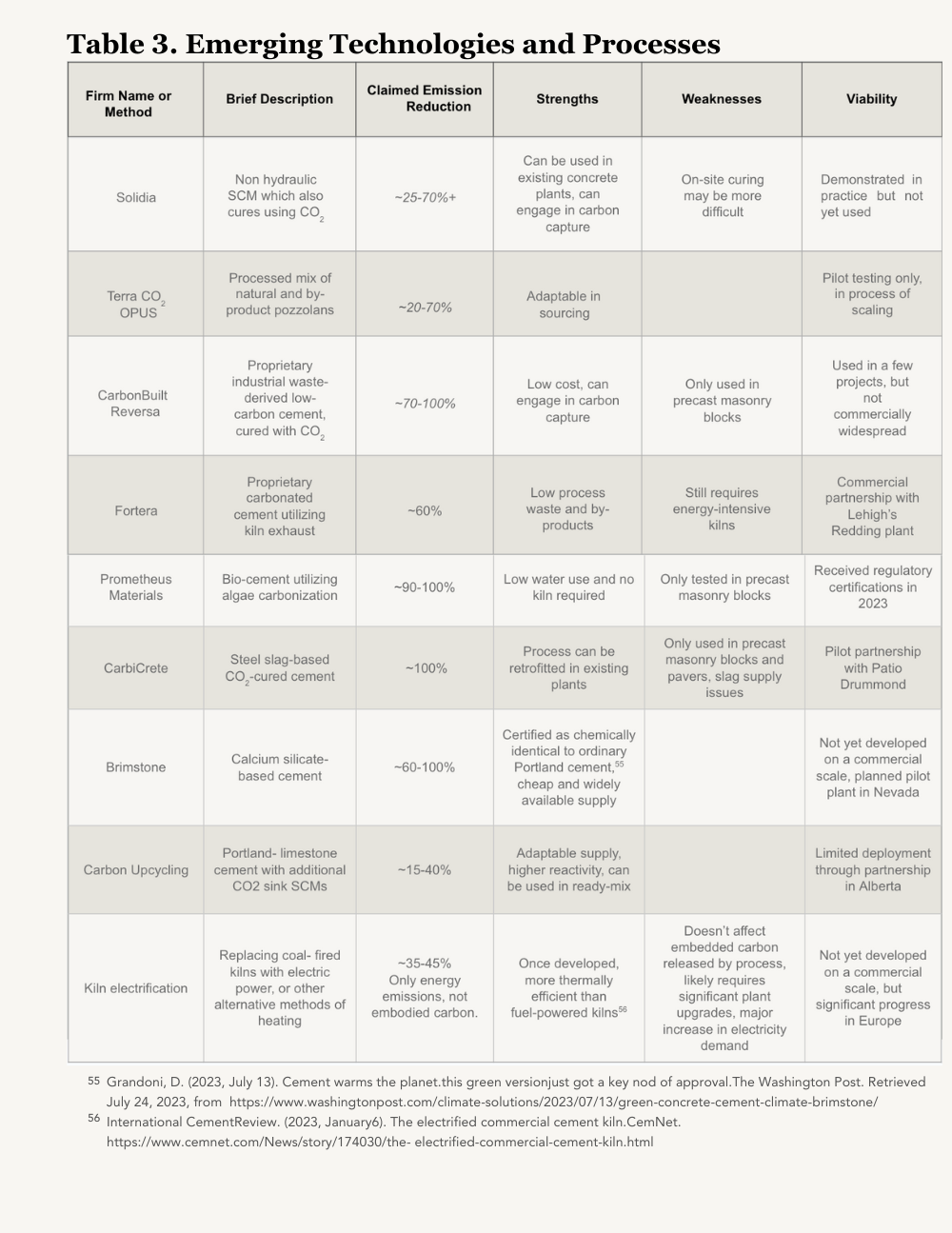
Challenge
- Many emerging green cement technologies have been developed for use in the creation of concrete masonry units (CMUs)—blocks, bricks, and other pre-cast concrete units— rather than ready-mix cement, which is mixed and poured on-site. CMUs and ready-mixes each have appropriate uses, and CMUs and other pre-cast concrete accounts about 20-25% of concrete, with the majority being used as ready-mix. Some of these emerging SCMs have only been tested as CMUs but could theoretically function in a ready-mix application. Nevertheless, a major roadblock to widescale cement and construction industry adoption is the current lack of an economically viable SCM that can be used both for ready-mix and CMUs.
Opportunities
- Constraints on traditional clinker replacements have spurred on the development of alternative SCMs which could similarly shrink the carbon output of cement while avoiding supply issues. While dozens of startups exist in the green cement space, and their proprietary technologies differ, most follow a similar method to existing SCMs—developing a material that can replace Portland cement, in whole or in part, and reduce the overall carbon emissions brought on by concrete manufacturing. Some of these emerging SCMs are non-hydraulic; unlike ordinary Portland cement, they are not cured by adding water to the mix, but usually by using CO2. Through a carbonation reaction, cementitious materials absorb CO2 to form calcium carbonate, or limestone, which along binds with the gravel and other aggregates to form concrete. This process greatly reduces the carbon emissions from cement and can even be a method of carbon capture.
- Green cement and concrete have also piqued the interest of those involved with carbon capture technologies. The concrete production cycle provides opportunities for both carbon capture and storage (CCS) and carbon capture and utilization (CCU). It is widely agreed that carbon capture would be necessary for the concrete industry to become carbon-neutral; however, should carbon capture technologies match theoretical or promised expectations in effectiveness, concrete could become a major carbon sink. Nevertheless, the pursuit of reductions in emissions through process-wide reductions in addition to carbon capture are necessary. Several emerging green cement technologies are designed around utilizing CO2 to cure concrete, rather than water as is used in conventional methods today. This process stores CO2 within the concrete, as an example of CCU.
- Electrification of cement kilns and other methods of power use reduction have been a point of interest as a method of reducing process emissions. The process of creating ordinary Portland cement requires a temperature of nearly 1500 °C at some stages, and this high heat requires the burning of coal or other fossil fuels. Electric kilns can reduce carbon emissions by reducing or removing fossil fuel use, as well as suffering less ambient heat loss than coal-powered kilns and thus more efficient. While not yet commercially proven, there have been significant developments in electrification, with several European cement firms57 demonstrating their interest in electric kiln research and development. European firms may be more interested in electrification because of higher fossil fuel prices, carbon taxes, and smaller plants on average than their American counterparts, but development of this technology should be able to be adopted industry-wide.
- However, many emerging SCMs—especially those that can substitute for Portland cement wholly—may not require the same high temperatures as current conventional processes do, which can both reduce overall fuel use as well as make electrification less challenging, as lower temperatures are more easily achieved.
57 Perilli, D. (2022, June 15). Update on electric cement kilns. Global Cement. https://www.globalcement.com/news/item/14256-update-on-electric-cement-kilns